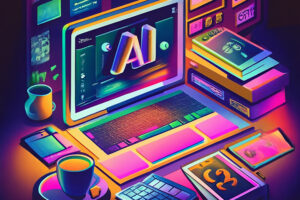When it comes to autonomous vehicles, Tesla is often hailed as a pioneer. But what AI does Tesla use to push the boundaries of technology and redefine transportation? Understanding this aspect gives us a glimpse into the future of driving and how artificial intelligence is at its core.

The Technologies Powering Tesla’s AI
At the heart of Tesla’s success in the electric vehicle market is a sophisticated AI system. This system is powered by a combination of deep learning, neural networks, and supercomputers. These technologies enable Tesla vehicles to perceive signals from their environment and make real-time decisions, enhancing the safety and efficiency of the drive.
Deep Neural Networks and Their Role
Tesla’s neural networks are designed to recognize a wide array of objects and predict real-world outcomes. These deep neural networks (DNNs) function by processing large volumes of data to improve the vehicles navigation systems, making sure that every decision is data-driven.
Tesla’s Revolutionary Autopilot System
The autopilot system of Tesla is one of its most thrilling features. Utilizing advanced machine learning algorithms, Teslas can manage steering, braking, and acceleration while interpreting complex driving scenarios. Such innovation allows for semi-automated driving in various real-world situations.
Vision-Based AI Approach
The vision-based AI approach of Tesla means it relies mainly on cameras and vision processing, minimizing the need for radar and lidar. This means Tesla captures detailed images of its surroundings and makes interpreted decisions based upon what it ‘sees’.
Benefits of Tesla’s Vision-Based Approach
The emphasis on vision allows Tesla vehicles to have fewer components that can fail, leading to reduced costs and complexity. This methodology not only enhances the overall user experience but reinforces Teslas position as a leader in AI-driven vehicles.
Data and Continuous Learning at Tesla
Teslas use of AI is not a one-time setup but an evolving process. The AI in Tesla vehicles continues to improve through data collected from millions of miles driven worldwide. This makes the drive safer and more intuitive over time, adapting continuously to new situations.
Data Collection Mechanism
The data Tesla cars gather every day is critical to improving the accuracy and efficiency of their driving systems. It involves sophisticated data logging and analytics, making each Tesla progressively ‘smarter’ with every journey.
Collaboration with Digital Creators
To further enhance AI learning, Tesla collaborates with digital creators. These partnerships are pivotal, allowing Tesla to refine its AI through creative insights and cutting-edge technological advancements.
Comparing Tesla AI with Other Automotive Giants
While Tesla continues to lead in the AI space, other automotive giants are investing heavily in AI research and development. This competitive landscape inspires Tesla to innovate continually, maintaining its status as a frontrunner in AI innovation.
Competition Fuels Innovation
The ongoing race in autonomous vehicle development ensures continuous improvements and sets the stage for exciting breakthroughs, not just for Tesla but for the entire automotive industry. [Read more](https://dzinerstudio.com/what-is-the-best-ai-for-writing/) about how AI can also empower the writing industry.
Challenges and Ethical Considerations
With innovation come inevitable challenges. Tesla faces questions around safety-related incidents and how AI can be both powerful and ethically responsible. Addressing these challenges is key to sustaining trust and credibility among users.
Ensuring Ethical AI Use
It is important for Tesla to maintain ethical AI use with transparency and responsibility, ensuring their AI systems are safe and secure. By putting ethics at the forefront, Tesla aims to build more than just technology, but sustainable trust among its users.
Tesla’s Future AI Developments
Looking ahead, Teslas roadmap includes further AI enhancements focusing on fully autonomous driving capabilities. As Tesla refines its AI, the goal is to deliver a seamless, fully automatic driving experience to consumers.
The Road to Full Autonomy
The ultimate vision is a self-driving future where human input is optional. Achieving full autonomy remains Tesla’s primary ambition, guided by innovative AI research.
Conclusion: Embracing the AI-Driven Future
Understanding what AI does Tesla use is pivotal to recognizing its impact on not just the transportation industry, but technology as a whole. Teslas commitment to AI innovation promises an exciting AI-driven future that could soon become a reality in our daily lives.

FAQ Section
How does Tesla’s AI system work?
Tesla’s AI system leverages deep learning, neural networks, and data from the vehicles sensors to make real-time driving decisions, enhancing safety and performance with each journey.
What sets Tesla’s AI apart from others?
Tesla distinguishes itself with its vision-based AI approach, relying primarily on camera images rather than lidar or radar, thereby reducing complexity and costs while improving driving precision.
How often does Tesla update its AI system?
Tesla continuously updates its AI system through over-the-air software updates leveraging data collected from autonomous driving experiences and feedback.







